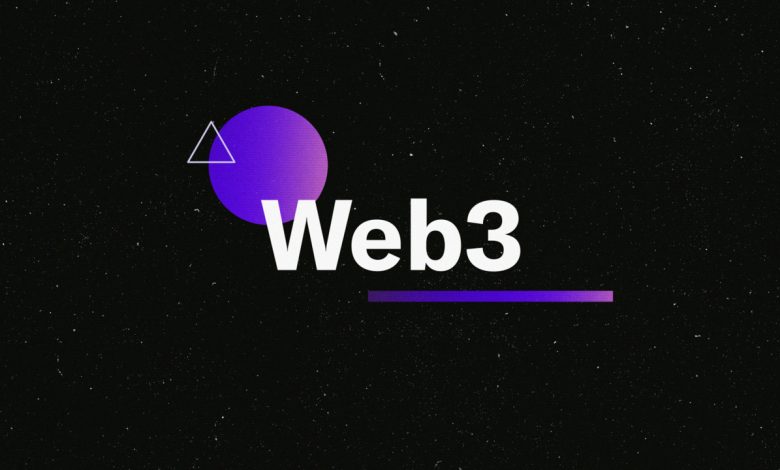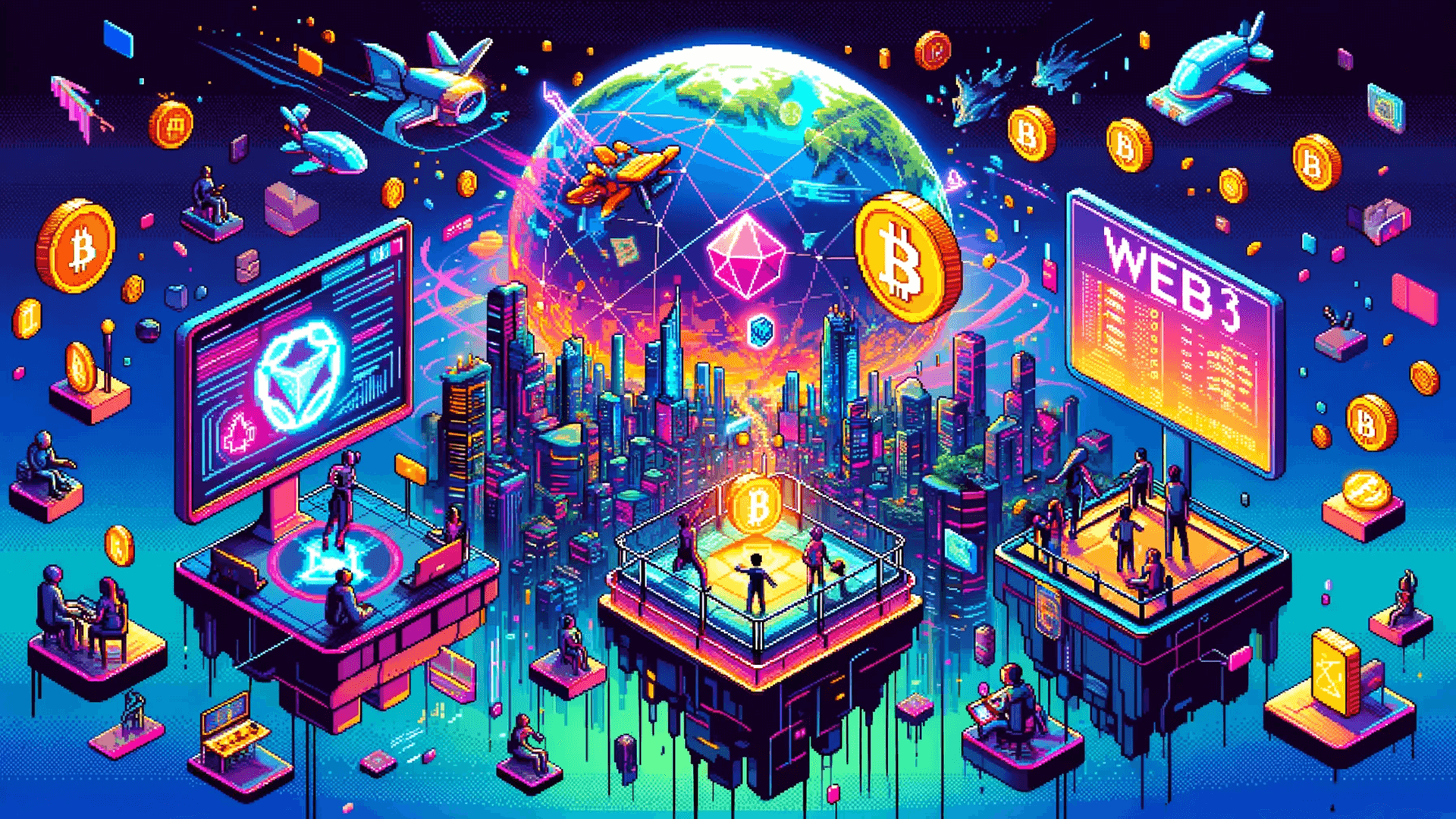What is Web3?

What is Web3?
Web3, also known as the decentralized web, represents the next phase in the internet’s evolution. It aims to move beyond the current version, Web 2.0, by emphasizing decentralization, user control, and trustless interactions. While Web 2.0 brought interactive, social websites like Facebook and YouTube, Web3 aims to put more power directly into users’ hands by leveraging blockchain and decentralized technologies.
How is Web3 Different from Web 2.0?
Web3 differs from Web 2.0 in several ways, primarily focusing on decentralization, privacy, and user control. Here are the key distinctions:
1. Decentralized Ownership
In Web 2.0, large companies, including Google, Amazon, and Facebook, control most online platforms and data. In Web3, blockchain technology allows for decentralized data storage and ownership. Users retain control over their own data and digital identities, reducing the power held by big corporations.
2. Trustless Transactions
It operates on the idea of “trustless” systems. This means that interactions do not require trust in a third party. Instead, blockchain and smart contracts allow users to engage directly with each other. This approach reduces the need for intermediaries, allowing transactions to occur securely and transparently.
3. Digital Identity and Privacy
It empowers users to maintain ownership of their digital identities. In Web 2.0, users rely on centralized accounts that companies control. In Web3, decentralized identities let users manage their personal information without giving full control to a third party, enhancing privacy.

Key Components of Web3
It incorporates various components and technologies that differentiate it from traditional internet systems:
1. Blockchain Technology
Blockchain serves as the foundation of Web3. This decentralized ledger records transactions in a secure, transparent, and unchangeable way. Blockchain allows data to be stored across multiple nodes rather than in one central server, ensuring security and integrity.
2. Smart Contracts
Smart contracts are self-executing agreements coded onto the blockchain. They automatically execute actions based on predefined conditions, reducing the need for intermediaries. In Web3, smart contracts power everything from financial transactions to decentralized applications (dApps).
3. Decentralized Applications (dApps)
dApps are applications that run on decentralized networks, often using blockchain as their foundation. Unlike traditional apps, dApps do not rely on a single server. Instead, they operate through peer-to-peer networks, which make them more resilient and transparent.
4. Decentralized Finance (DeFi)
DeFi is a major component of Web3. It represents a new financial ecosystem that operates without banks or traditional intermediaries. Through DeFi, users can lend, borrow, and trade assets directly with each other using smart contracts. This setup allows for faster, cheaper, and more accessible financial transactions.
5. Non-Fungible Tokens (NFTs)
NFTs are unique digital assets stored on the blockchain. They can represent ownership of digital items like art, music, or even virtual real estate. In Web3, NFTs empower creators to sell digital items directly to buyers without intermediaries, transforming how digital content is monetized.
Advantages of Web3
It offers several benefits that set it apart from traditional internet models:
1. Increased User Control
In Web3, users have more control over their data and digital identities. With blockchain, they can interact directly with platforms and services without relying on centralized authorities. This increased control fosters a sense of ownership and privacy.
2. Enhanced Security and Privacy
Web3’s decentralized structure and encryption provide a higher level of security. By storing data on multiple nodes, it becomes more challenging for hackers to compromise user information. Additionally, users retain control over their data, which reduces the privacy risks associated with centralized platforms.
3. Reduced Dependence on Intermediaries
It minimizes the need for third parties in transactions. By using smart contracts, users can directly interact with each other without intermediaries. This setup lowers transaction costs, speeds up processes, and reduces the potential for fraud or manipulation.
4. Empowerment of Content Creators
It enables creators to retain ownership of their content through NFTs and decentralized platforms. Rather than relying on platforms like YouTube or Spotify, creators can monetize their work directly, keeping more of the profits. This shift also reduces censorship, allowing creators more freedom to express themselves.
Potential Use Cases of Web3
It has several real-world applications, each transforming different industries:
1. Decentralized Finance (DeFi)
DeFi enables users to access financial services without banks. Users can lend, borrow, and earn interest on their assets through decentralized platforms. This setup offers financial inclusion and makes financial services accessible to people in underbanked regions.
2. Supply Chain Management
Web3’s transparency can improve supply chain management. By recording each step on the blockchain, companies can track products from creation to delivery, ensuring authenticity. This transparency also reduces fraud and enhances consumer trust.
3. Digital Identity and Authentication
With Web3, users can manage their identities securely. Decentralized identities give users control over their personal information, which reduces identity theft and enhances privacy. Instead of relying on passwords, users can access platforms using cryptographic keys.
4. Gaming and Virtual Worlds
In Web3, players can own in-game items as NFTs. This ownership gives players the freedom to trade or sell items across platforms. Web3 also enables the creation of virtual worlds where users can buy and own digital land, blurring the lines between the real and virtual worlds.

Challenges Facing Web3
Despite its potential, Web3 faces challenges that may impact its growth:
1. Scalability Issues
Blockchain networks can struggle with scaling. High transaction volumes can lead to slow processing speeds and high fees, which limit Web3’s efficiency. Developers are exploring solutions like layer-two protocols to improve scalability.
2. Regulatory Concerns
Web3 operates outside traditional regulatory frameworks. Governments are still determining how to regulate decentralized networks and digital assets. Unclear regulations may slow Web3 adoption and create legal uncertainty for users and developers.
3. Technical Barriers
Web3 technology can be complex and difficult for the average user to understand. Wallets, private keys, and smart contracts introduce unfamiliar concepts, which can be daunting for beginners. User-friendly interfaces and educational resources are essential to promote broader adoption.
4. Security Risks
While blockchain is secure, smart contracts are not foolproof. Bugs or vulnerabilities in smart contracts can lead to hacking and financial losses. Ensuring security remains a top priority for Web3 developers to prevent these incidents.
The Future of Web3
Web3 is still in its early stages, but its growth is rapid. As technology advances, Web3 could reshape the internet as we know it. It promises a decentralized and user-centric internet, moving away from the corporate-controlled Web 2.0 model. However, for Web3 to thrive, it must address its challenges, especially around scalability, security, and regulation.
In the future, Web3 could create a new era of digital freedom, where users control their online presence. With ongoing innovation and improvements, Web3 has the potential to transform various industries, making the internet more open, transparent, and accessible.
Conclusion: Web3 and the New Digital Landscape
Web3 represents a revolutionary shift toward a more decentralized, secure, and user-controlled internet. It aims to empower users, reduce reliance on big corporations, and foster a more inclusive digital ecosystem. While Web3 brings many advantages, it faces technical and regulatory challenges that must be addressed for mainstream adoption.
As Web3 technology continues to develop, it holds the promise of a more accessible and resilient internet, where users control their data and digital interactions. This shift could redefine the digital landscape, making it more transparent and empowering for all.



